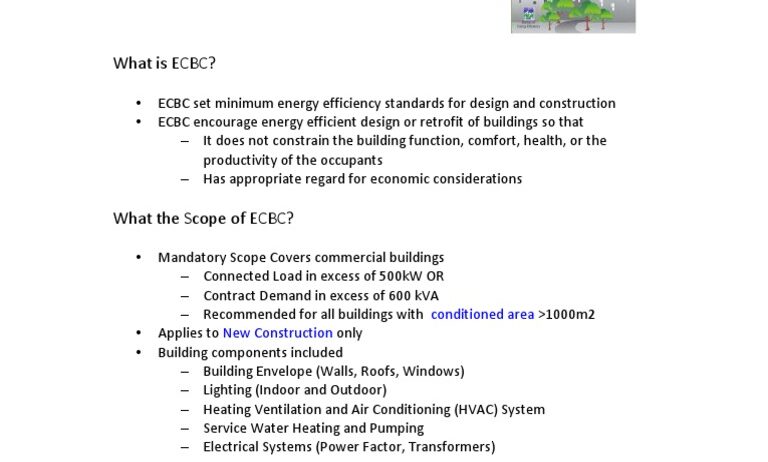The North Carolina Energy Conservation Code (NCECC) represents a crucial regulatory framework aimed at enhancing energy efficiency in residential and commercial buildings. This code is designed to optimize energy performance, reduce greenhouse gas emissions, and yield long-term economic benefits for property owners and communities alike. Understanding the NCECC involves delving into its objectives, benchmarks, and the essential standards that govern building practices across the state of North Carolina.
At its core, the NCECC mirrors the larger trend of increased energy consciousness displayed by states across the nation. This observance of energy efficiency has been spurred by a plethora of factors, notably rising energy costs, environmental implications, and the recognition of the finite nature of fossil fuel resources. The code embodies a collective effort to pivot towards sustainable development while fostering the well-being of occupants through enhanced air quality and thermal comfort.
The NCECC integrates a set of stringent guidelines tailored for various building types. This code delineates minimum performance criteria for elements such as insulation, windows, HVAC systems, and lighting, collectively striving for a comprehensive enhancement of a building’s energy profile. One of the most notable features of the NCECC is its alignment with the latest iteration of the International Energy Conservation Code (IECC), ensuring that North Carolina’s standards remain modern and effective in tackling contemporary challenges.
Among the fundamental requirements of the NCECC is the stipulation concerning thermal envelope provisions. The thermal envelope encompasses the outer shell of a building, including walls, roofs, floors, and foundations. Proper insulation and air sealing are paramount. Insulation materials must possess adequate R-values—an indication of resistance to heat flow. Compliance with the NCECC mandates specific R-values depending on climate zones, which vary across North Carolina.
The ventilation requirements are likewise a focal point within the NCECC. Building practices must incorporate mechanical ventilation systems designed to ensure indoor air quality while minimizing energy losses. The code advocates for energy recovery ventilators (ERVs) or heat recovery ventilators (HRVs) to circulate fresh air without significant energy expenditure. This dual focus on conservation and well-being addresses a common observation: occupants spend substantial time indoors, thus accentuating the importance of maintaining a conducive living environment.
Moreover, the window performance standards stipulated in the NCECC are noteworthy. The code delineates precise requirements for the solar heat gain coefficient (SHGC) and the U-factor, both critical in assessing window energy performance. SHGC measures how much solar radiation passes through the window, impacting cooling loads in warmer months. The U-factor indicates the rate of heat transfer through the window, affecting insulation and energy requirements in cooler months. By enforcing these standards, the NCECC aids in minimizing reliance on artificial heating and cooling, ultimately resulting in lower energy usage and reduced utility bills.
Another critical aspect of the NCECC is its emphasis on energy-efficient lighting. The code mandates the use of high-efficacy lamps for indoor and outdoor lighting applications. This directive promotes the deployment of LED and compact fluorescent lamps that, while initially more expensive, provide substantial energy savings over their lifespan. Furthermore, integrating advanced lighting control systems, such as occupancy sensors and daylight harvesting, can significantly reduce energy consumption while providing adequate illumination.
Compliance and enforcement mechanisms are integral to the successful implementation of the NCECC. Building professionals, including architects, contractors, and inspectors, must possess a thorough understanding of the code to ensure that new constructions and remodels align with energy-efficient practices. A series of inspections are required at various construction stages, ensuring that energy-saving measures are accurately implemented and verified according to established standards.
Homeowners and commercial property developers must also recognize the financial incentives associated with adhering to the NCECC. While the initial investment in energy-efficient building practices may be perceived as burdensome, the long-term savings and potential rebates or tax credits can offset these costs. The operational efficiencies gained from reduced energy expenditures augment property value and attractiveness to prospective buyers or tenants. This financial facet draws attention to the compelling rationale beyond mere regulatory compliance.
As energy efficiency becomes increasingly pivotal, the NCECC serves as a foundational element in North Carolina’s commitment to sustainability. However, this regulatory mandate also hints at deeper, underlying motivations. The growing awareness around climate change and the urgency to reduce carbon footprints elucidate a societal shift towards more conscientious building practices. A burgeoning collective fascination with sustainability catalyzes a reevaluation of conventional approaches to architecture and construction.
In conclusion, understanding the North Carolina Energy Conservation Code is vital for anyone engaged in the building sector, from regulatory bodies to property owners. The interplay of energy-saving standards reflects broader socio-environmental imperatives that resonate throughout the state and beyond. As energy efficiency becomes a primary consideration in building practices, the NCECC provides an essential blueprint to guide stakeholders in achieving sustainable, energy-efficient structures for future generations. Embracing these standards is not merely a legal obligation but a proactive measure towards fostering a healthier planet and more prosperous communities.






